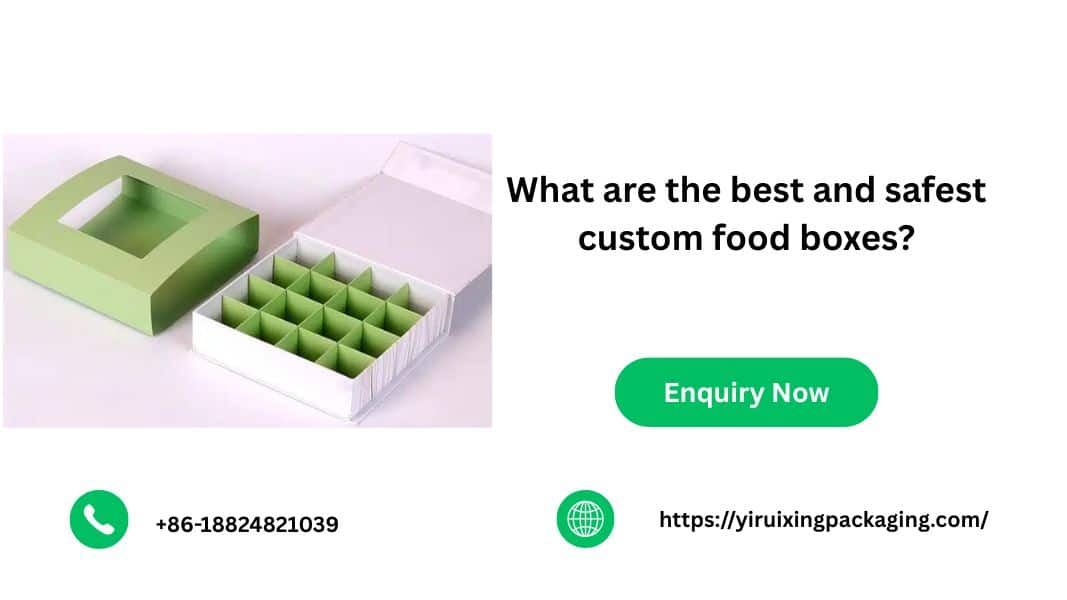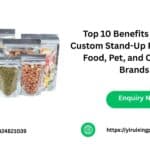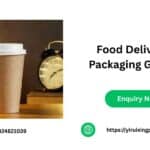What are the best and safest custom food boxes? – You are aware that the manner in which you package your food is as important as the food itself, in case you are in the food business. If you have a bakery business, a restaurant company, or sell ready-made snacks on the Internet, adequate food boxes might make or break the experience of your customers. They preserve your food, make it fresh and safe to consume, and present it to your customer in good shape. However, the big question to ask here is What are the best and safest custom food boxes? The solution boils down to a combination of materials, design, and level of safety. It is time to know about it so that you can select packaging that will keep your food safe and will create trust among your customers.
Table of Contents
ToggleWhat Makes a Food Box Safe?
Boxes are not all created equal. The safest are the following principles:
1. Constructed of food-grade materials.
This is non-negotiable. Food-grade refers to the fact that the material will not contaminate your food with toxic substances or an odd flavor. The most trusted alternatives are:
- Food-safe coating is used on cardboard or Kraft paper and works well with burgers, sandwiches, and baked goods.
- PET or HDPE plastics, which do not release toxins and can be used in cold or liquid products.
- Businesses that are going green should use compostable materials like PLA or bagasse that are eco-friendly and made of plants.
2. Strong barrier protection
Food needs to be taken care of in terms of moisture, grease, and even light. For example:
- The Pizza box must be grease-resistant.
- A coffee pouch should have an oxygen barrier.
- Light protection is advantageous to chocolate.
3. Sturdy structure
Nobody would want to receive a delivery and discover that the pastries are squashed or the curry is spilled. A safe box should:
- Stacking and shipping are also to be handled.
- Insert compartments to divide the sauces or sides.
- Place the seals that cannot be tampered with; this helps the customers to understand that the food has not been touched.
4. Manufactured safety
Poor production practices can spoil everything, although what is produced may be safe. Always do business with those suppliers who utilize:
- Food-safe inks and glues.
- Hygienic and clean manufacturing processes.
- Other certifications like HACCP, GMP, or others.
5. Eco-friendly when possible
The customers today adore environmentally conscious brands. You can gain big points of loyalty by using compostable or recyclable boxes, provided that these boxes do not interfere with the preservation and safety of the food.
Custom Boxes of Food (Types and Usage)
The following is a brief overview of well-known choices and their best use:
Corrugated boxes – Durable and safe, corrugated boxes are suitable for large products or perishable food.
Folding cartons – Light and flexible, suitable for cereals, snacks, or dry food.
Kraft grease-proofed boxes – Ideal to use with take outs, fast food, or baked goods.
Stand-up pouches/Mylar bags – Ideal when the products are coffee, nuts, or dried fruits and require a long shelf life.
Compostable containers – These containers are better suited for restaurants and delivery services that are eco-conscious, that is, for hot or oily commodities.
They both have their merits and demerits, but the most suitable one is determined by your product: is it hot or cold, greasy or dry, breakable or tough?
Which Food Boxes to Select to Start the Business, and which to Order to be Safe?
The following is just a basic checklist that will guide you to make a decision:
- Know your food. Greasy foods must be wrapped using grease-proof paper, and fragile baked goods should be cushioned.
- Check the rules. Some jurisdictions have a different packaging policy; ensure your boxes are good.
- Ask for certifications. Do not accept the work of a supplier and receive the supplies blindly; demand evidence of food-grade goods.
- Test before you commit. Sample orders and test under the conditions of real work: hot food, delivery trips, or refrigeration.
- Adequacy of safety versus sustainability. Green is good, but it must be as good as conventional wrappings in preserving your food.
Real-World Examples
- A restaurant can also use Kraft paper boxes with grease-resistant lining in order to ensure the box does not go see-through when it gets oily.
- Coffee roasters tend to use stand-up pouches that have oxygen barriers to preserve freshness.
- A bakery that delivers cakes all over the country requires the help of corrugated boxes with inserts and liners to ensure that nothing is spoiled on the way.
- Packaging is the trick: get the match for your food.
Conclusion
What are the most appropriate and safe custom food boxes, then? The ones that suit the needs of your food, preserve it, and maintain its quality, are produced using certified food-grade materials and supplied by a company that you can be assured of. They guard meals, allay fears of your consumers, and when properly designed, they can even enhance your brand image.
Yiruixing Packaging is a company to consider in case you are looking to find a trustworthy partner. They specialize in food-grade, customizable boxes that are safe, stylish, and convenient to use by any business regardless of their size.
FAQs
What does food-grade really mean?
It implies that the product is approved to be in contact with food either directly or indirectly. It will not emit any harmful chemicals or smells, and it will not alter the taste of the food you eat.
Can the food boxes that are biodegradable be considered safe?
Not automatically. Biodegradable products are green, yet they have to meet food safety standards. Others disintegrate more quickly and cannot be used when storing foods that have a longer shelf life.
What can I do to ensure my boxes are delivered?
Inspect dried-up building, grease or moisture-resistant finishes, and secure fasteners. Never stop without making test runs to find out how your packaging can work in the actual delivery conditions.
What are the certifications that I should be seeking in a supplier?
Determine such things as HACCP, GMP, or ISO certifications. In addition, request them to provide evidence that inks, adhesives, and coatings are food safe.





